dedee
Established Member
I acquired 8 lignum vitae woods from a bowling club that was forced to close recently. First project was to cut one in half and make a pair of bowls.
The WIP was a practice run with the most cracked and split wood to see how it could be done.
Removing the plastic end caps was the first task. They appear to be made of some kind of acrylic which sent chards all over the workshop when hit with a mallet and chisel.
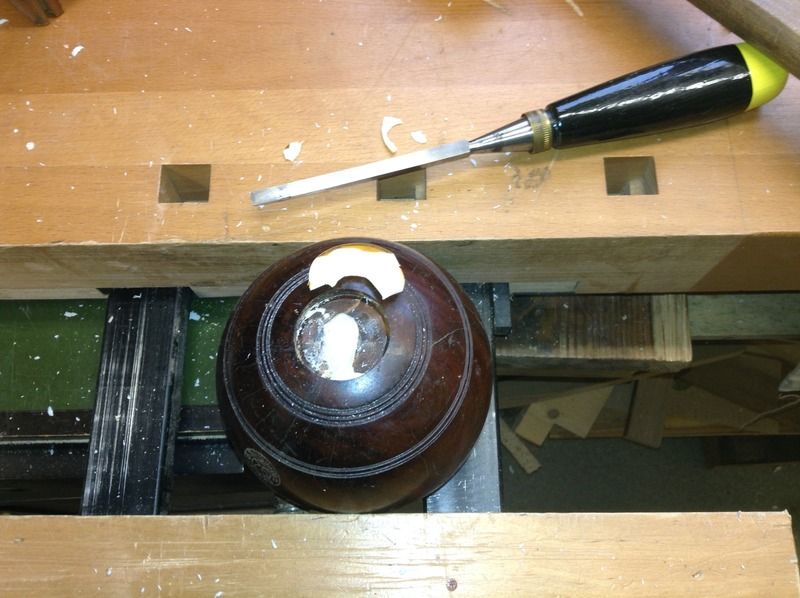
One side was quite a bit larger than the other which is too small at the moment to go in the expanding jaws of the chuck.

Once mounted on the lathe and at a very slow speed (360rpm) the slight bias of the bowl is evident in the video

The parting tool worked better than I expected, although the colour of the shavings threw me a bit. Yellow shavings from a dark brown wood.
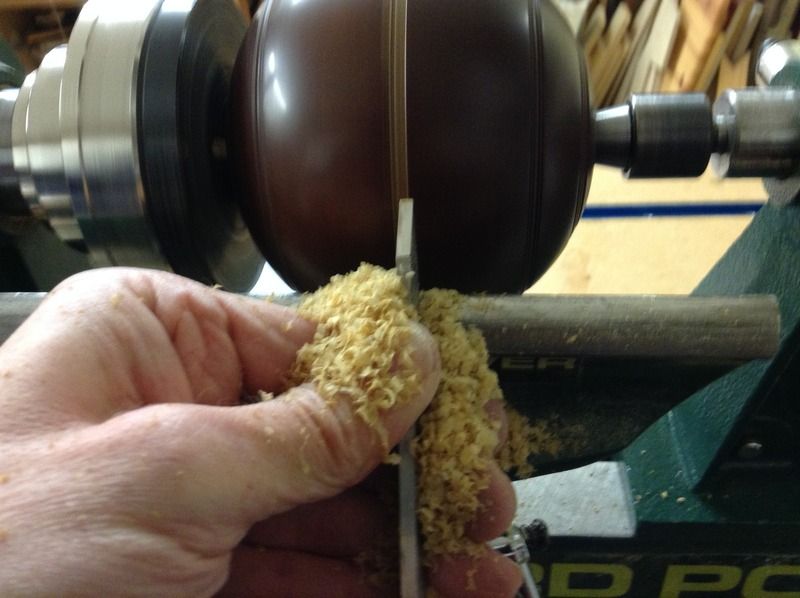
The parting tool got me down down to about 3/4" of the centre. With only a slight fraying at the sides. I did widen the cut as I went deeper.
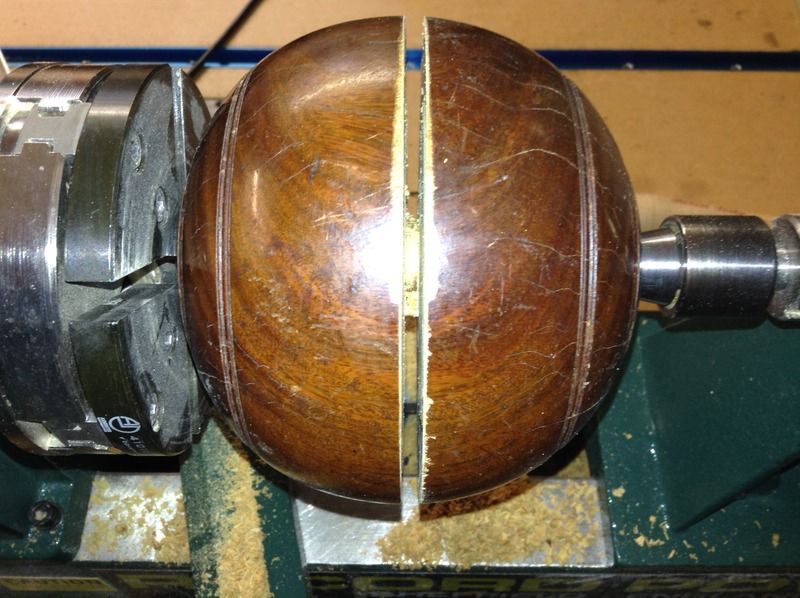
Finished the cut with the tenon saw.
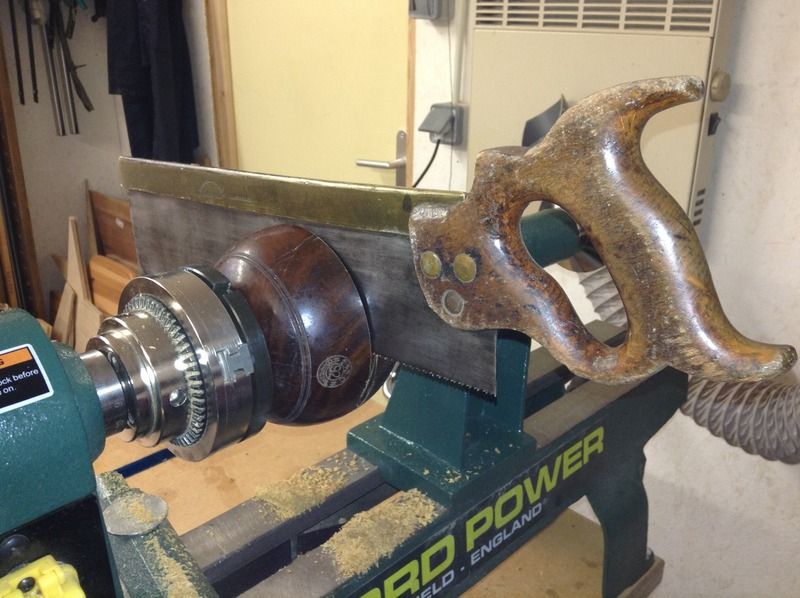
2 halves
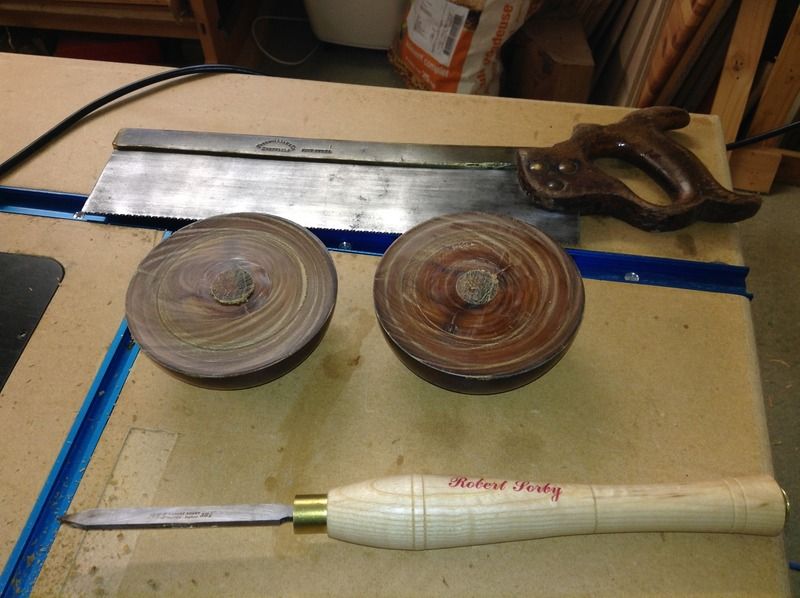
I read a number of articles that suggested that scraping LV was easier than using a gouge so a 1/2" scraper was used throughout.
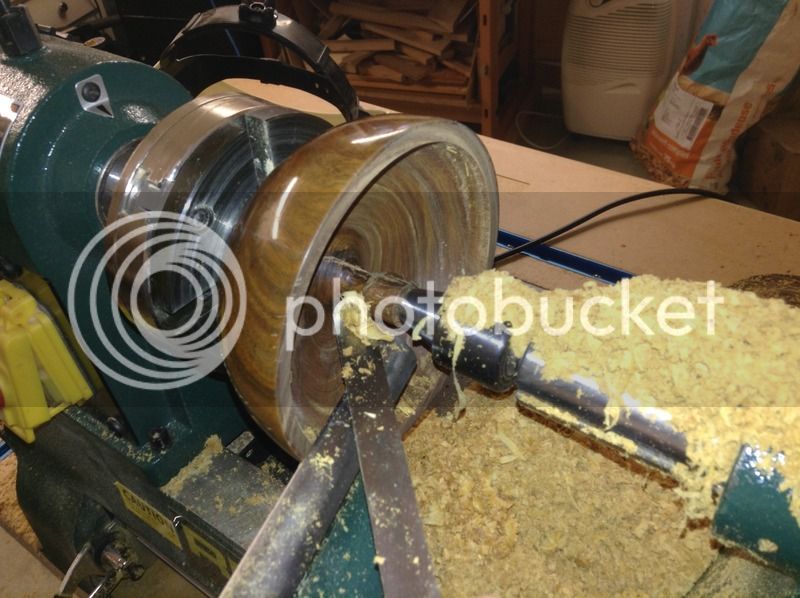
I wanted to keep the outside as original as possible and this particular wood had plenty of cracks and a markers mark.
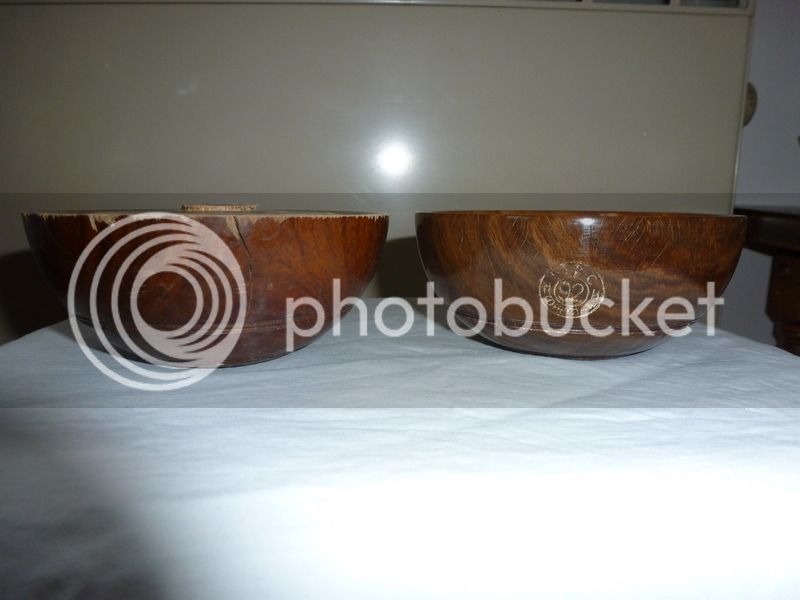
I also wanted to keep the base as original as possible, so mounted on the button jaws I just cleaned up the recess a bit.
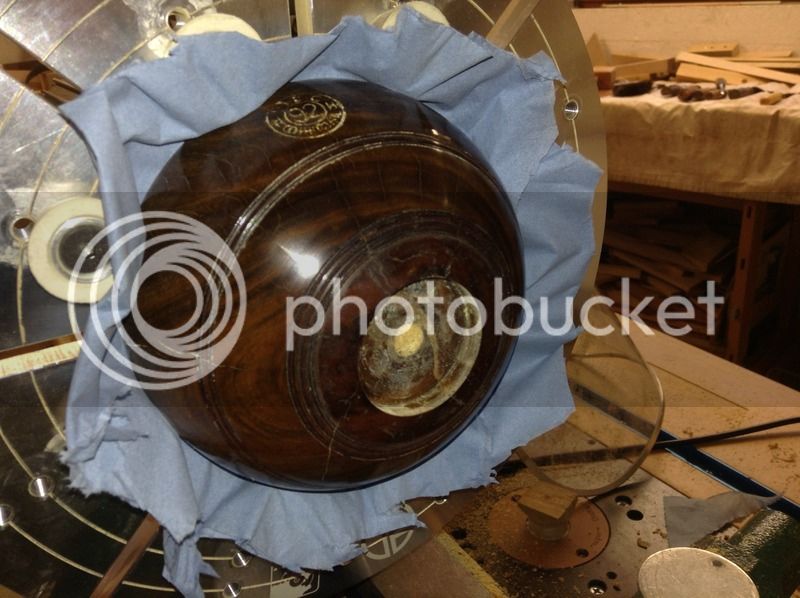
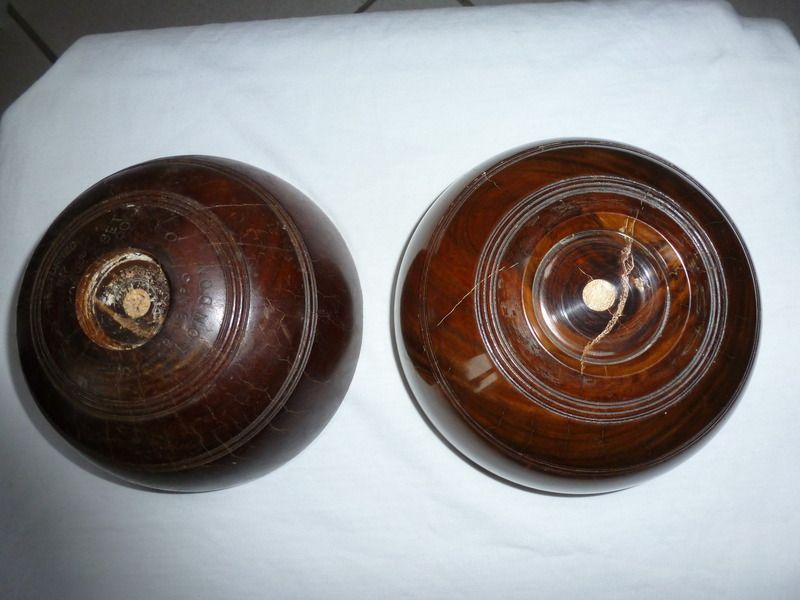
I need to improve the finish on the next one. Not sure if the marks here (the one on the right) are from streaks in the sanding sealer or from the tool.
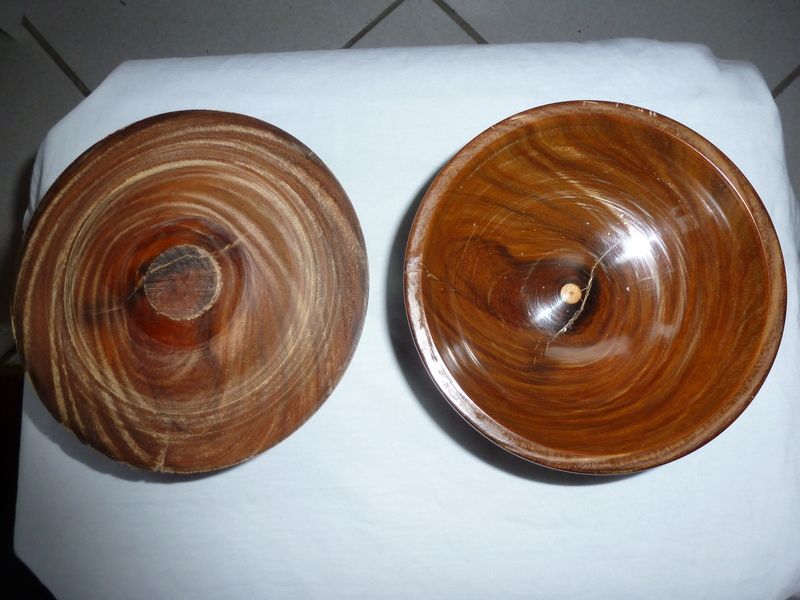
As lignum vitae is so heavy and oily any sawdust that is produced is also very heavy and does not float around at all in the air.
Here are a pair of bowls from from another wood (gets confusing woods and wood) and have just have sent to my father (the ex-president of the folded club) for his birthday.
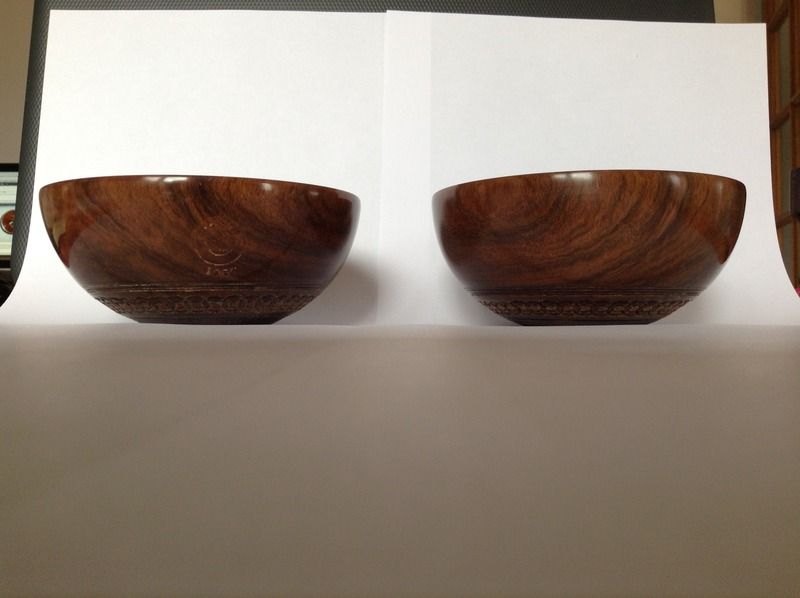
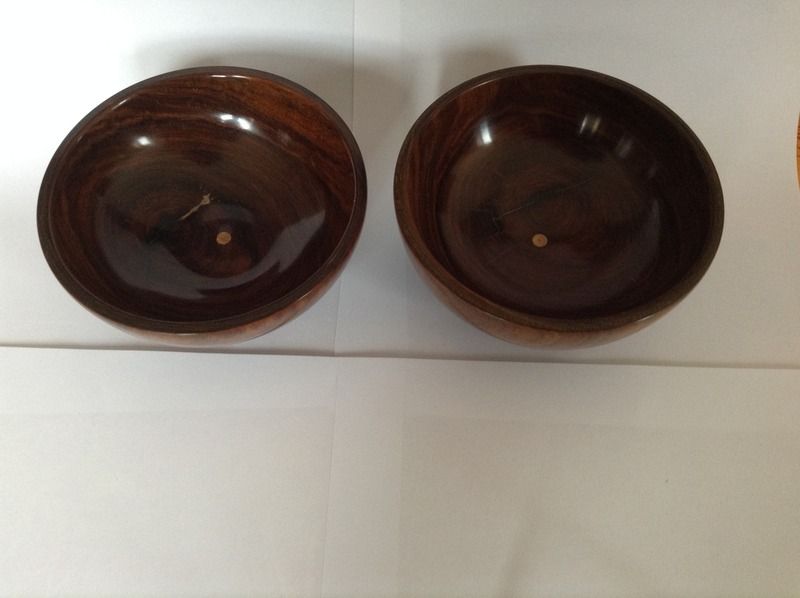
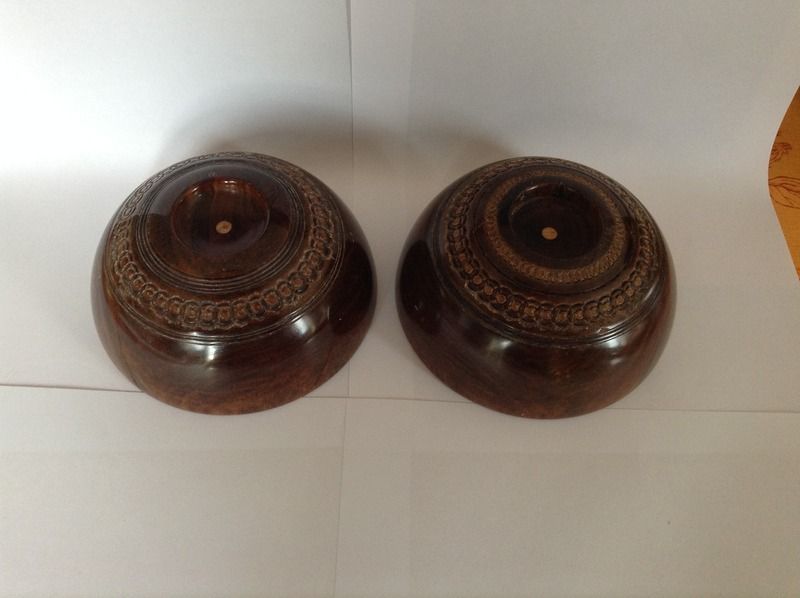
finished with thinned cellulose thinners and carnuba wax.
Thoughts and comments welcome.
The WIP was a practice run with the most cracked and split wood to see how it could be done.
Removing the plastic end caps was the first task. They appear to be made of some kind of acrylic which sent chards all over the workshop when hit with a mallet and chisel.

One side was quite a bit larger than the other which is too small at the moment to go in the expanding jaws of the chuck.

Once mounted on the lathe and at a very slow speed (360rpm) the slight bias of the bowl is evident in the video
The parting tool worked better than I expected, although the colour of the shavings threw me a bit. Yellow shavings from a dark brown wood.

The parting tool got me down down to about 3/4" of the centre. With only a slight fraying at the sides. I did widen the cut as I went deeper.

Finished the cut with the tenon saw.

2 halves

I read a number of articles that suggested that scraping LV was easier than using a gouge so a 1/2" scraper was used throughout.

I wanted to keep the outside as original as possible and this particular wood had plenty of cracks and a markers mark.

I also wanted to keep the base as original as possible, so mounted on the button jaws I just cleaned up the recess a bit.


I need to improve the finish on the next one. Not sure if the marks here (the one on the right) are from streaks in the sanding sealer or from the tool.

As lignum vitae is so heavy and oily any sawdust that is produced is also very heavy and does not float around at all in the air.
Here are a pair of bowls from from another wood (gets confusing woods and wood) and have just have sent to my father (the ex-president of the folded club) for his birthday.



finished with thinned cellulose thinners and carnuba wax.
Thoughts and comments welcome.
































